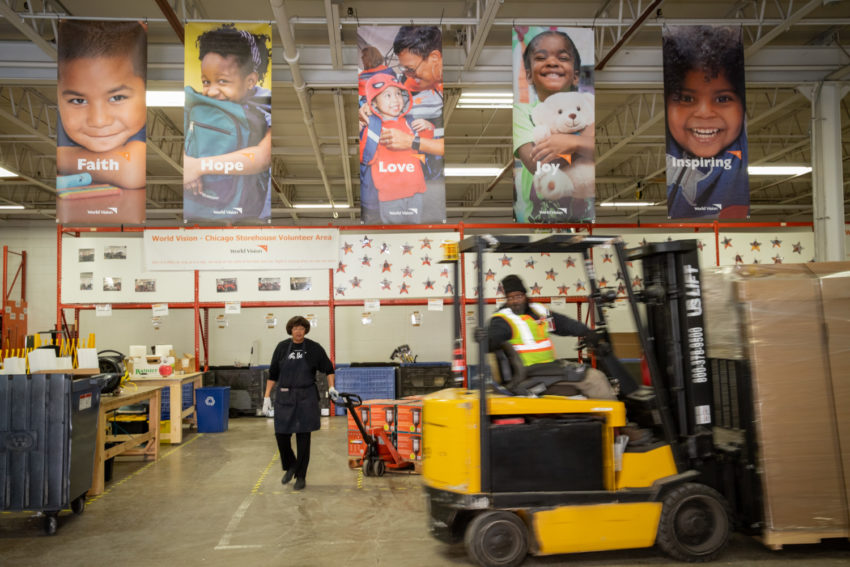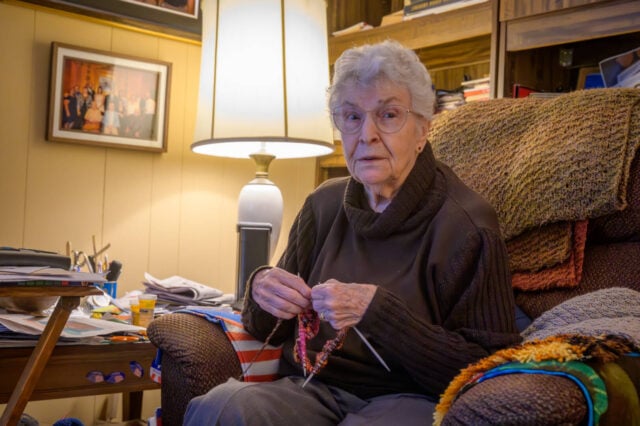Every day, hundreds of World Vision staff and volunteers across the United States work to bring hope to children and families in some of the country’s most vulnerable communities. Whether they’re assembling food kits, women’s hygiene kits, or school supplies packs with their church or coworkers, or dispatching semi-trucks full of emergency relief supplies, they do it so others can experience a fuller, more joyful and purposeful life.
About 4 million people in the U.S. benefited from that work and the generosity of thousands of donors, companies, churches, and other partner organizations in 2018. That includes more than 2.2 million children who benefited from school supplies, family food kits, hygiene supplies, after-school programs, and emergency relief supplies.
Here are the inspiring stories of a few of those people.
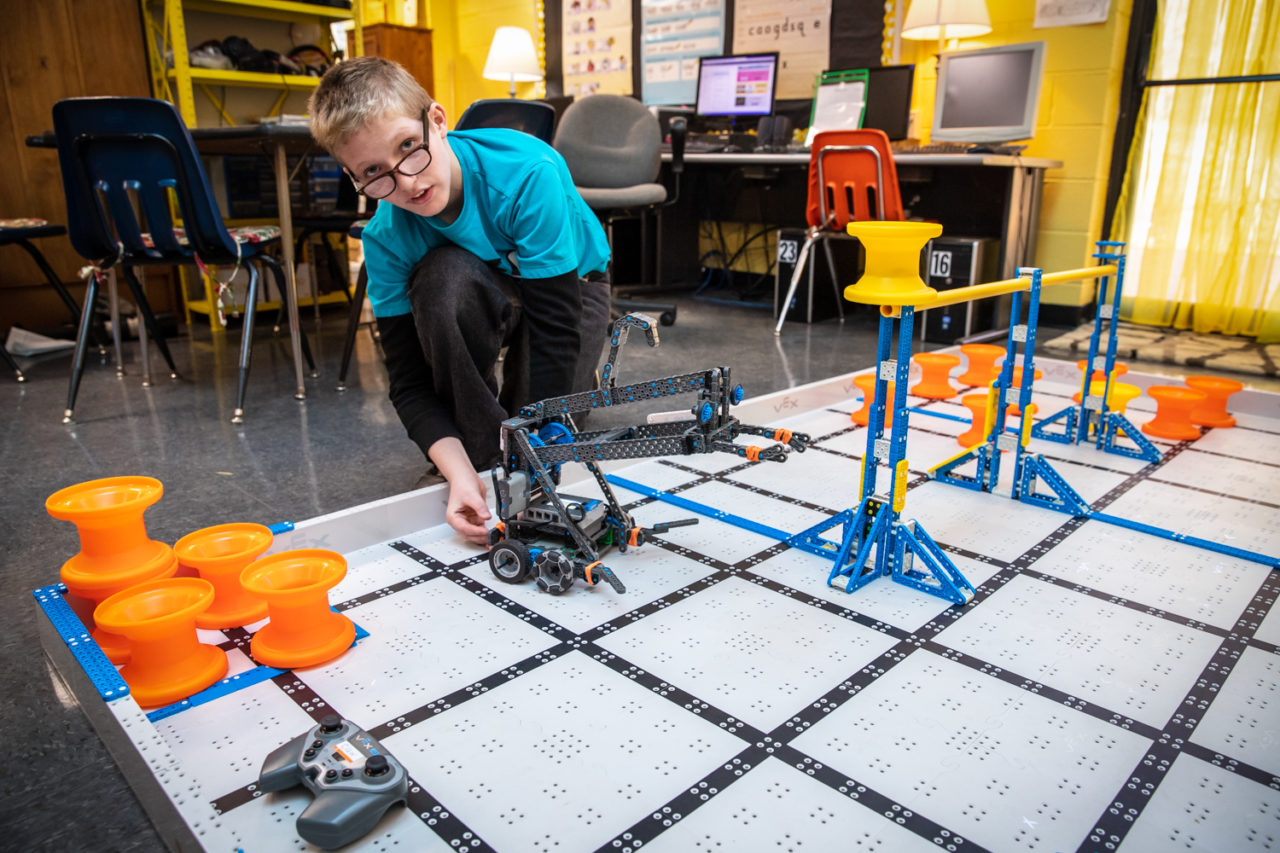
West Virginia boy trades troubled past for tinkering with robots
As 12-year-old Allen Zerkle prepares to demonstrate how to operate a robot, he tinkers with a component to make sure it will perform just right. He’s focused — more focused and content than the people closest to him have ever seen him. He places the bot on the challenge mat, grabs the remote control, and begins.
Two years ago, no one would have imagined seeing Allen this calm and collected — and happy. He struggled in school more than most kids and had trouble controlling his anger.
When Allen began attending Junior Elementary School in Junior, West Virginia, in 2017, he didn’t speak, couldn’t read, and had severe behavior disorders. He and his four siblings had endured neglect and abuse from their parents and had been in and out of foster homes.
“His childhood was not one of kindness and lollipops,” says Charla, a seasoned special-education teacher who has worked closely with Allen since he arrived at the school. “When they brought Allen in (to school), it was a little intimidating because we knew his reputation.”
Junior Elementary is situated in rural Barbour County, one of the poorest counties in West Virginia. Many students here struggle with the disastrous effects of unemployment and the opioid crisis on their families. So consistent attendance and focus in school is hard to come by for many students.
“This school is truly like a safe haven for these kids because the community is in so much chaos,” says Shelby Dettinger, who runs World Vision’s KidREACH after-school program at Junior Elementary and other schools in the area.
For teachers here who want to innovate and help their students thrive, it can be tough to find funding or resources for new programs. But around that time, Charla Reger, Allen’s special education teacher at Junior Elementary, started a robotics team at the school with a grant through World Vision.
Allen’s demeanor and attitude began to change when he heard about the school’s new robotics club. He couldn’t let it go. He had to do it.
So his adoptive parents worked with Charla to set conditions for his participation. Allen, who had been disruptive among his classmates in the past, respected the rules and boundaries and began to excel in robotics.
“It’s pretty fun, and I get to help other kids build them,” Allen says. “I’m a fast builder.”
Since joining in 2017, Allen’s involvement in his school’s robotics club has enabled him to thrive in ways that are surprising his teachers, parents, and even his classmates. Now, he’s more sociable with classmates, he’s reading, he’s interested in math, and the other robotics club kids come to him for help with building and coding the robots. In February 2019, the Junior robotics team brought home a second-place trophy from a regional tournament.
“Before, I wasn’t really interested in school because it was hard,” Allen says slowly and thoughtfully. “Now, I’m happy and excited.”
Not only has Allen’s attitude and academic ability changed, but Charla and others at the school see so much promise in him that they got his student record officially changed as well to reflect the transformation in his behavior. His behavior had changed so substantially that now he is only considered to have a learning disability.
“We didn’t want that behavior disorder diagnosis to be hanging around his neck when he hit middle school,” Charla says. “When you enter middle school from Junior, you already have a target on your back because they say, ‘Well you’re just from Junior.’ If you go in and you’re from Junior and have a behavior disorder, you’re going to be targeted.”
Even though he’s young, Allen seems hopeful for the future because of his robotics experiences. He says, “It’s fun because it helps you when you’re older and to get a job.”
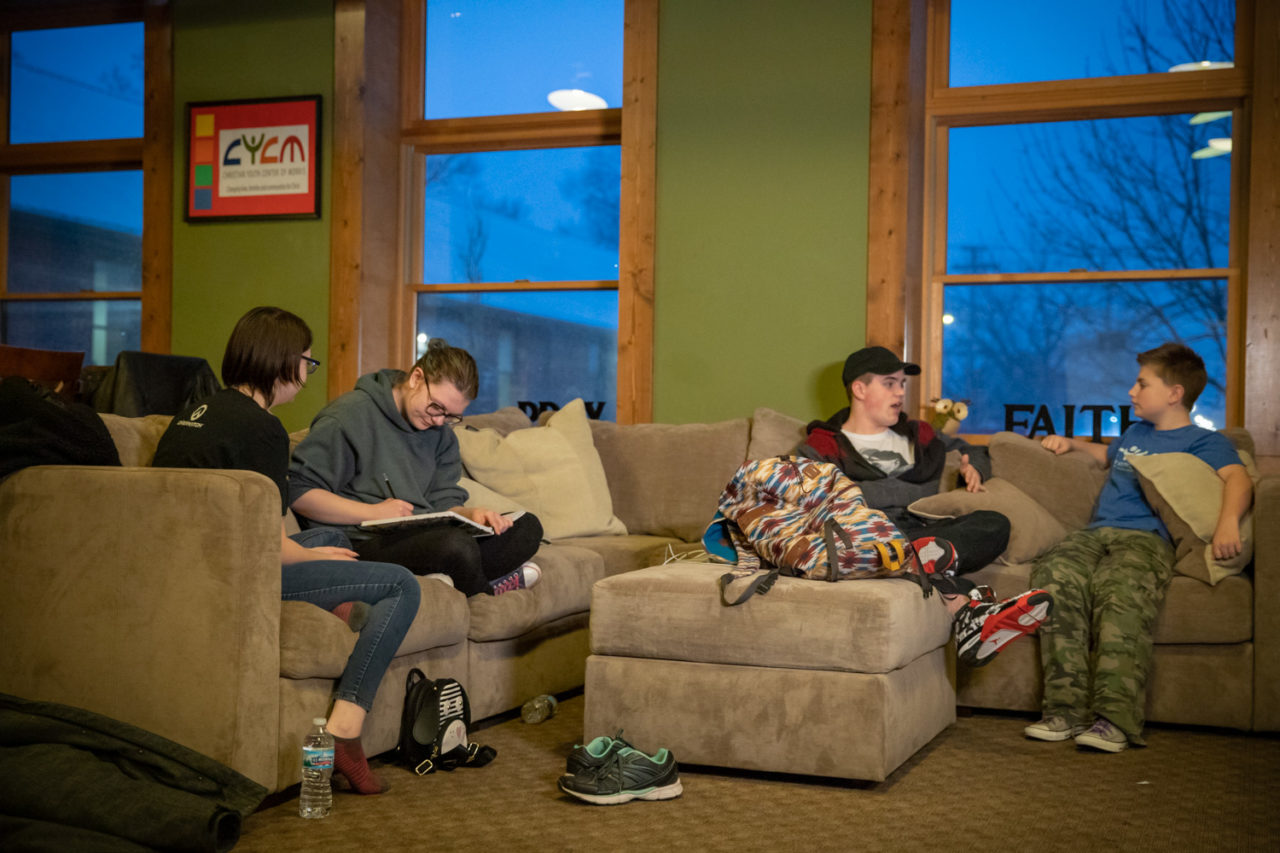
Furniture creates community at Chicago-area youth center
When the teenagers that attend Christian Youth Center of Morris first walked in and saw a huge, inviting — and new — Lovesac couch, their first response was to ask if they were allowed to sit on it.
“We were like, ‘Yeah, you can sit on it!’” says Betsy Burnett, who volunteers with the youth and on the board at the center.
Founded in 2001, the Morris, Illinois, center works to reach area youth for Christ, care for broken people, and unite the church. Pastor Brad Underwood has led the center for two years as its director. The center serves area churches and is available to whoever wants to come in. It’s open during the week and also holds special events throughout the year.
The center combines the look and feel of a kitchen, game room, and living room all into one inviting space. The furniture and other donations are a key piece of setting the ambiance. Betsy has worked with staff at World Vision’s Chicago Essential Supplies Center to make the large youth center welcoming and homey. Through their partnership with World Vision, the center has furnished the space with benches, tables, a large sectional couch, a shuffleboard table, and even lighting for their gymnasium.
“The Lovesac has been incredible,” Brad says. “When you go into a youth room, you expect to see a couch that’s 25 to 30 years old and just came from grandma’s basement. I am very thankful for that couch because it’s obviously not that in its quality.”
It’s more than just a couch, Betsy says. This furniture and other games and supplies allow the staff and volunteers to create a space where students from all backgrounds in the community feel welcomed and comfortable to relax and be themselves.
“We don’t want to just have nice stuff,” Brad says. “We want kids to feel like this is a valuable place and be a place where they can feel comfortable, and this is a place that they can have community at. You all have given us a lot of stuff that has helped us in that regard.”
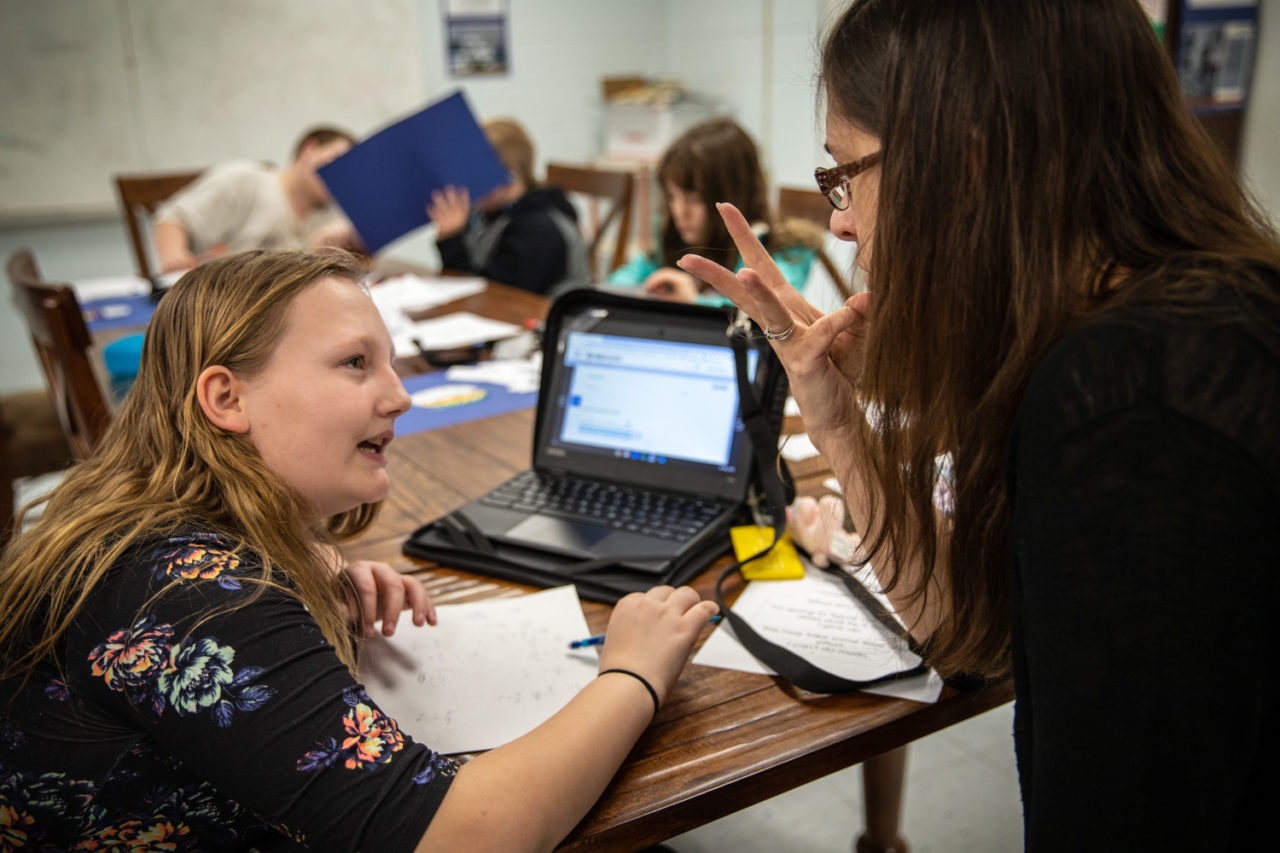
Middle-schoolers get homework help, hot meal at Reach U
When children return home after school, most of us would expect them to be able to get help with their homework and eat a hot dinner. But in rural West Virginia, neither of those expectations are guaranteed for children. To help fill the gap, World Vision runs a grant-funded, after-school program for students at Philippi Middle School called Reach U.
Modeled after the KidREACH program, which began in area elementary schools, Reach U provides a hot meal, homework help, social time, and learning enrichment. Many participants depend on the hot meal because they would not otherwise have dinner at home after school. Juliana Cummings, 13, is one of them.
“If you can’t afford to pay for your food every day, then you can go here and get dinner,” Juliana says.
Students like Chelsea Cade, 11, also depend on the homework guidance they receive from program leaders and volunteers to keep their grades up.
“I was failing because I didn’t get help with my homework,” Chelsea says. “Here, it’s helped me keep my grades up. I’m actually pretty excited about it. I wanna get all my stuff turned in so I can keep my grades up.”
And for some, like 10-year-old Barrett Ammons, Reach U provides a safe, structured space to make new friends. In the first half of the program’s first year at Philippi Middle School, Barrett says he made three or four friends and looks forward to Reach U time every day.
Participating in Reach U doesn’t only help the students. It also benefits their families. Program leaders meet with parents once a month to stay in touch about their students’ progress.
During one of those monthly gatherings, parents learned about emergency preparedness and were outfitted with basic supplies to create emergency kits — smoke detector, flashlight, and basic first aid kit.
“It was a good thing to learn about because if we didn’t, then we wouldn’t know what do to [in an emergency],” Chelsea says.
Kathy Ammons, Barrett’s mom and a Reach U volunteer, says the program helps keep potentially idle youth out of trouble.
“There’s not a whole lot to do in Philippi,” Kathy says. “This is a safe place for kids to hang out after school and have a good time and not be out on the streets.”
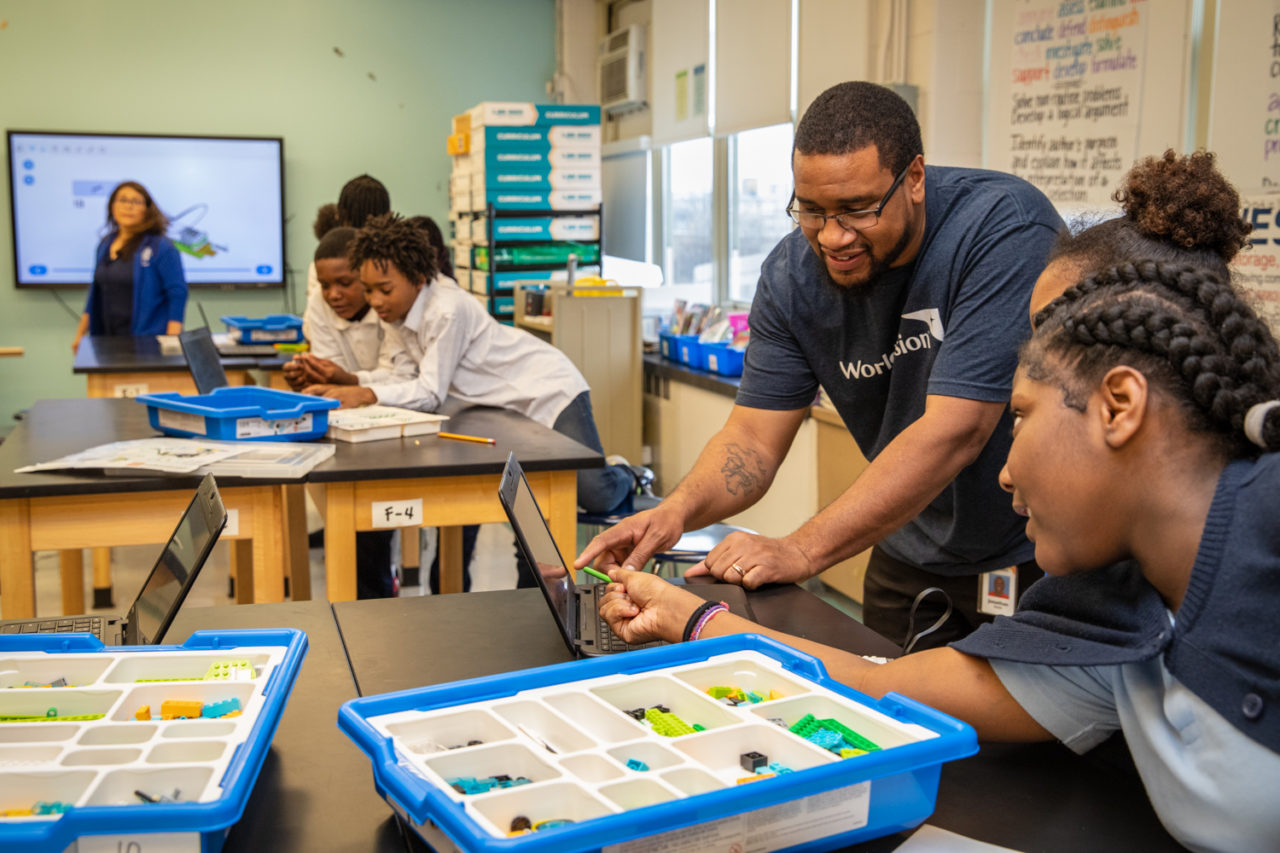
Screen time proves productive at Chicago elementary school
At Genevieve Malory STEM Elementary School in Chicago, Magdalena Sandoval spends each day creatively teaching science to young minds from fifth to eighth grade.
Always wanting to try new ways to engage her students, she began using a new interactive smart monitor in the science lab when the 2018-19 school year began. It was a gift from a donor through World Vision’s Teacher Resource Center and Essential Supplies Center in Chicago.
Since then, the device has given Magdalena easier access to online and other visual resources that allow her to keep her students engaged in learning. The touchscreen device connects to the internet and can mirror a computer, among other features.
Today, the students are using LEGO-guided projects to learn about Chicago’s harbor locks system and the job of operating it. She walks them through some instructions and a couple of videos for context. Then they break into small groups to build and program a model of the lock system.
“The nice thing about having the monitor is that I can walk them through what they’re going to be doing,” Magdalena says. “They view it up there all together, then they work separately on their own.”
If they’re programming or building and they get stuck on something and Magdalena needs to refer to something, she can go back to the monitor, pull that screen up, and show them how to do it. Or a student who has already done it correctly can go up and show the class how they were able to figure it out.
“Our kids tend to be really visual learners. So they need to be able to see what you want to accomplish during the class,” she says. “In order for them to grasp it all, it makes it so much easier to have that monitor there and be able to show them and walk them through and let them go on their own to discover.”
Teachers can configure the monitor in many ways, and that makes it a versatile tool to engage the next generation of scientists, engineers, and tech workers.
“It’s such a digital world now,” Magdalena says. “When there’s not a screen, sometimes I wonder if everyone is paying attention. This tends to capture everybody. This helps those other learners — who may not have caught the material at the beginning — it helps capture their attention too because they can see it. It’s definitely been a great addition to the science lab.”
